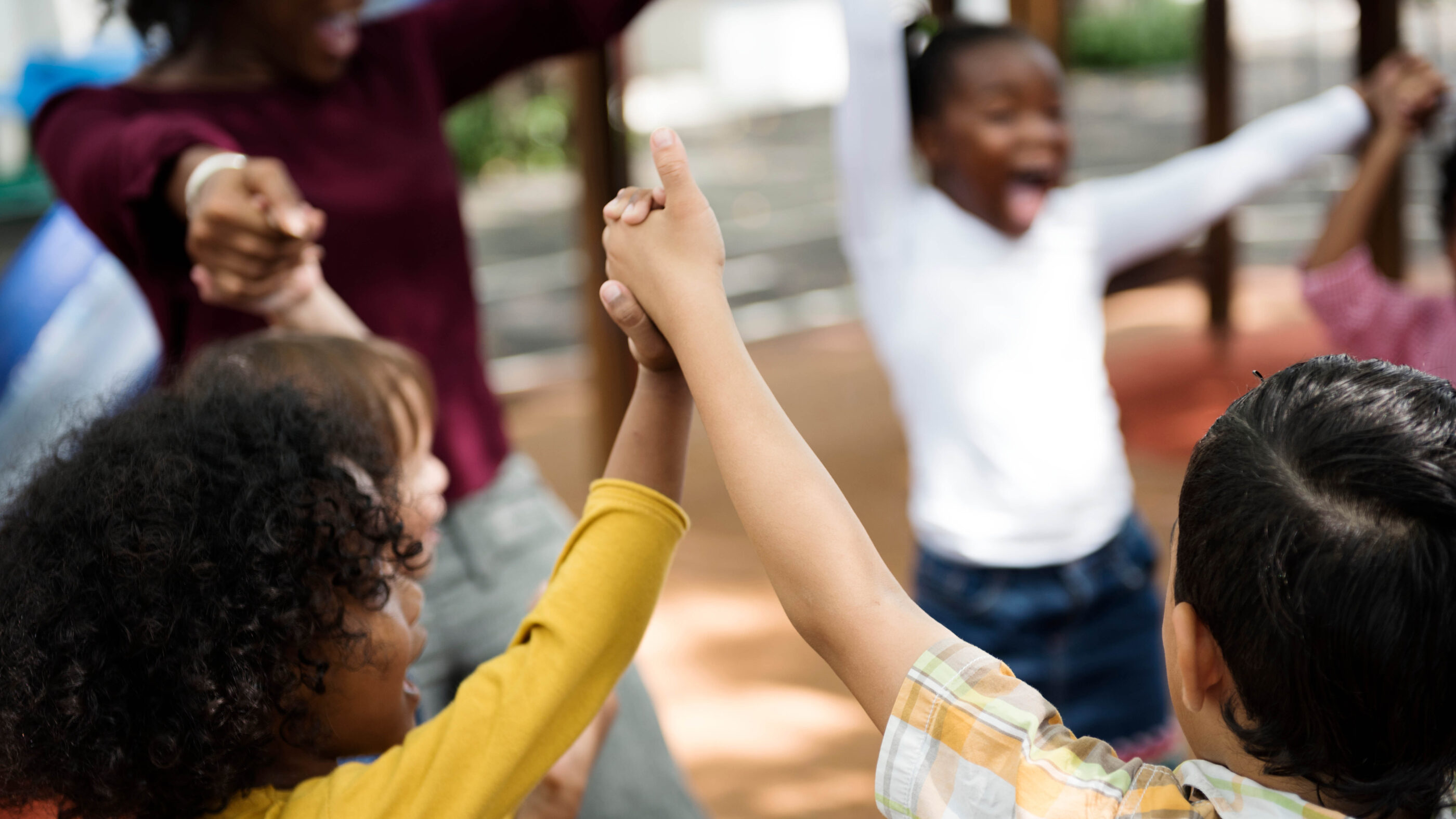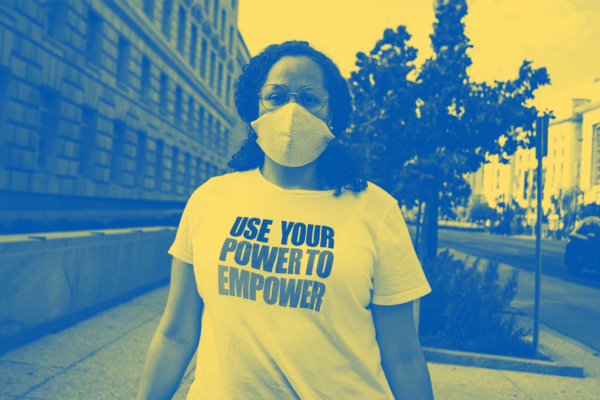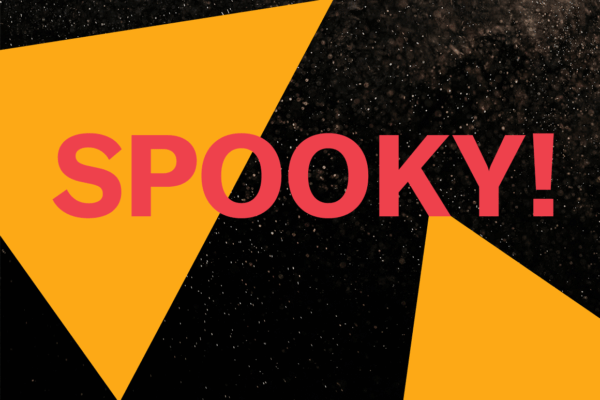Cultural relevancy and race equity learning belong in the classroom.
If we are not being race-conscious in schools, Black, Indigenous, and Students of Color suffer. They suffer not only because they are not being fully seen, but also because they are not being given the best education environment possible for them to excel in.
This year, there has been much debate about whether race should be taught in schools. Shamefully, lawmakers in some states have passed bans on teaching critical race theory or any other racial justice topics. Critical race theory is a term first used in the 70s and 80s that delves deeper than just looking at individual prejudice, instead focusing on racism embedded within institutions and government systems. Although critical race theory isn’t taught in K-12, (it is an academic law theory), those opposed to teaching critical race theory in schools just don’t want the truth about race and racism in America talked about in schools at all.
Although critical race theory isn’t taught in K-12, (it is an academic law theory), those opposed to teaching critical race theory in schools just don’t want the truth about race and racism in America talked about in schools at all.
Teachers who are knowledgeable about race equity provide a better classroom environment that supports a diverse pool of students and teaches the next generation how to notice, overcome, and dismantle white supremacy. Students learn to think more critically as they are exposed to the world around them.
Not only that but when we acknowledge race, we acknowledge students’ cultures, backgrounds, families, and perspectives, which is an important way of connecting with them. This approach fosters strong relationships, positive identity development, and overall success among Black, Indigenous, and Students of Color in school.
Dr. Ivory Toldson, President and CEO of the Quality Education for Minorities Network, professor of counseling psychology at Howard University, and former head of the White House Initiative on Historically Black Colleges and Universities, is a national expert on educating students of color and building channels for post-secondary success.
Dr. Toldson examines systemic inequities in schools and reports what Black children need to succeed. Back in 2018, the ACLU of Maryland advocated for the Maryland Commission on Innovation and Excellence in Education ("Kirwan" Commission) to take into consideration Dr. Toldson’s recommendations to ensure that they help shape the Kirwan Commission’s plans.
One of Dr. Toldson’s recommendations was to offer a culturally aligned and academically enriching curriculum. It is of great importance that Black children feel connected to their academics and to their teachers. But despite our advocacy in 2018, the ACLU is still working with partners to promote these ideas and realize them in Maryland education policy. Recently, I spoke with a teacher and a student from Maryland who both spoke of the importance of race equity and connections in the classroom. Janiya Nabintt is a 16-year-old who has been a Girls Scout member for 10 years, is one of the creators of TeensForJustice, and is a student at Gwynn Park High School in Prince George’s County, Maryland. Dr. LaShaune Stitt is an education entrepreneur, adjunct professor at the Community College of Baltimore County, a former Assistant Principal in Baltimore City, and a former teacher in the New York City where she is from.
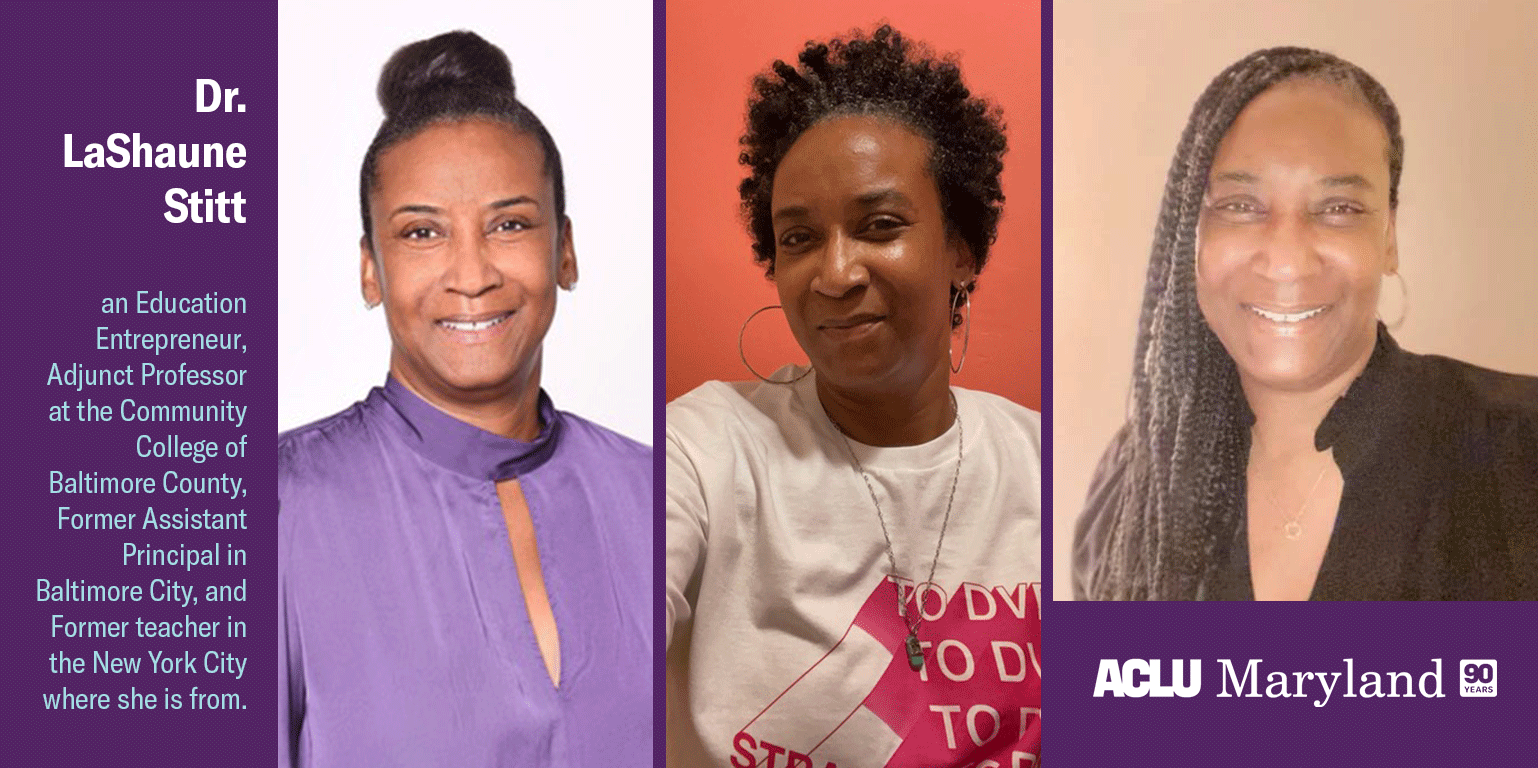
"I know race equity is important because kids need to be able to identify with someone or something and connect." –Dr. LaShaune Stitt
"I am a woman of color and I have children of color," said Dr. Stitt. "I’ve also been in education for 24 years and I have seen the absence of equity and cultural connections. I know race equity is important because kids need to be able to identify with someone or something and connect. They need to understand how relevant those people or those experiences are in their life. For Black and Brown students, we need to make their education relevant to them because without that relevance, there is a disconnect."
Dr. Stitt believes that race equity in the classroom builds students’ personal capacity, social relationships, and identity. It helps them stay connected to their community, and it also informs them about history and where we are now as a society. In fact, because of her teaching style, Dr. Stitt still feels strongly connected to her students even though she is not a teacher anymore. She feels connected to her students because she still speaks to them and their families even today.
Dr. Stitt said: "In the past, as a proposal writer for an all-male high school in the Bronx, I wrote the curriculum and made sure it was culturally relevant for the students who were mostly boys of color. The books they read were strictly for boys of color and it discussed issues they had in their community. They connected to these books."
Long after the children finished high school, they still discussed these books. It showed Dr. Stitt just how important it was to make education culturally relevant to her students.
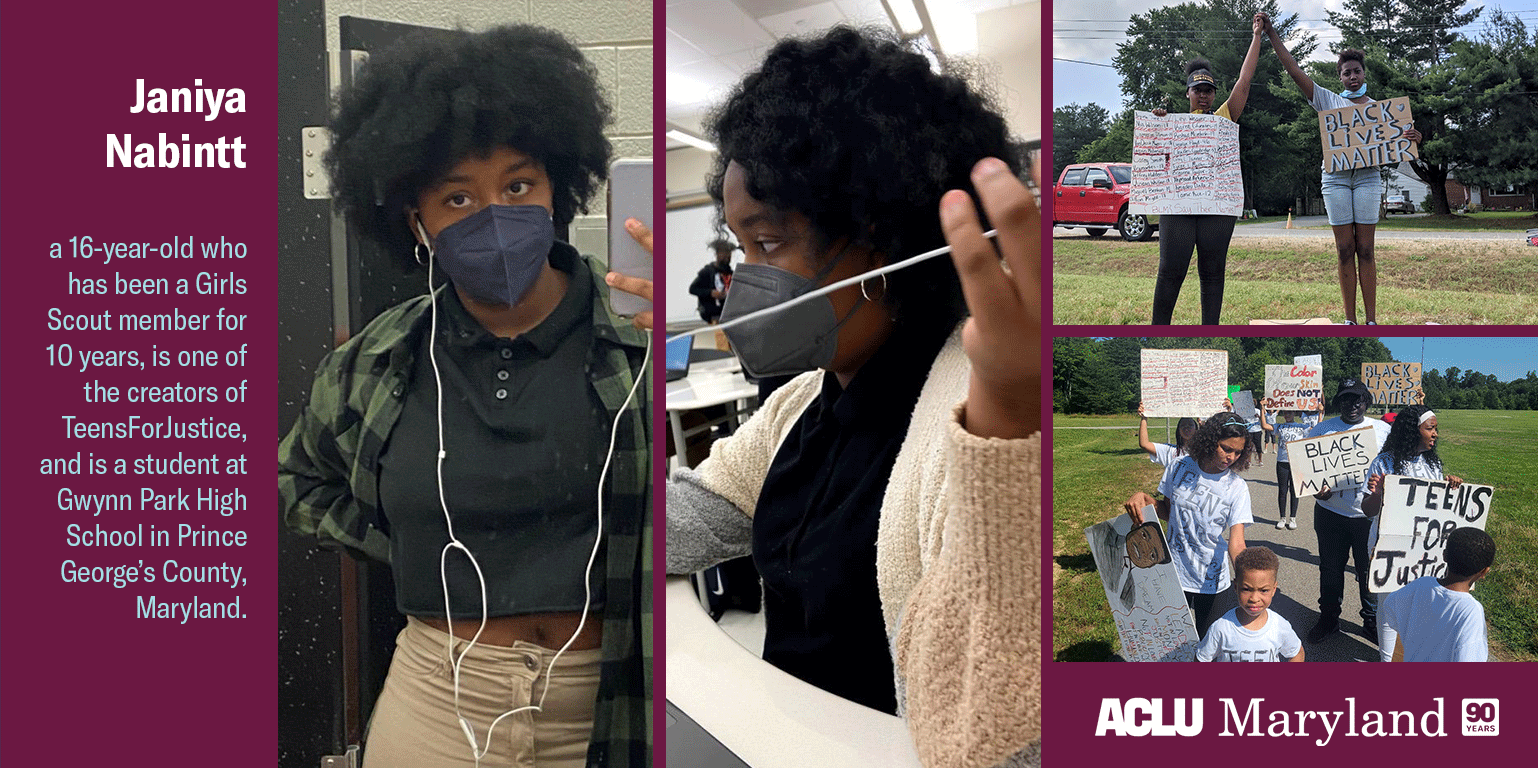
And as a student, Janiya also understands the importance of cultural relevancy and race equity in the classroom. She feels it really matters to be connected with Black and Brown children on a deeper cultural and emotional level.
"Race equity is important because you need to understand the community," said Janiya. "You need to understand the community in order to help children."
"Race equity is important because you need to understand the community. You need to understand the community in order to help children." –Janiya Nabintt
Sadly, Janiya expressed that she didn’t have any race-conscious teacher figures in her life. Instead, she learned about race equity from her family. Still, Janiya holds the belief that race equity should be taught in schools.
"Black and Brown children are the ones who suffer the most when you don’t think of race equity," said Janiya.
You see, Black, Indigenous, and Children of Color do not have the privilege of not being able to see race. Each day, they must see it in order to navigate society and understand their community and relationship to it. They watch and sometimes even experience police brutality, unjust immigration laws, and everyday racism. We are not helping BIPOC students, or anyone, by not mentioning race in classrooms. In fact, we are actively hurting our students by not acknowledging their identities and life experiences in a racially conscious way.
As a society, we must be brave enough to do this work. Our lawmakers must be motivated to support this positive movement. By taking strong measures, we can show Maryland children we care about them, we want to connect with them, and we want to overcome white supremacy together with them. Teachers and education leaders must be knowledgeable about race equity, because cultural relevancy and race equity learning do belong in the classroom.

